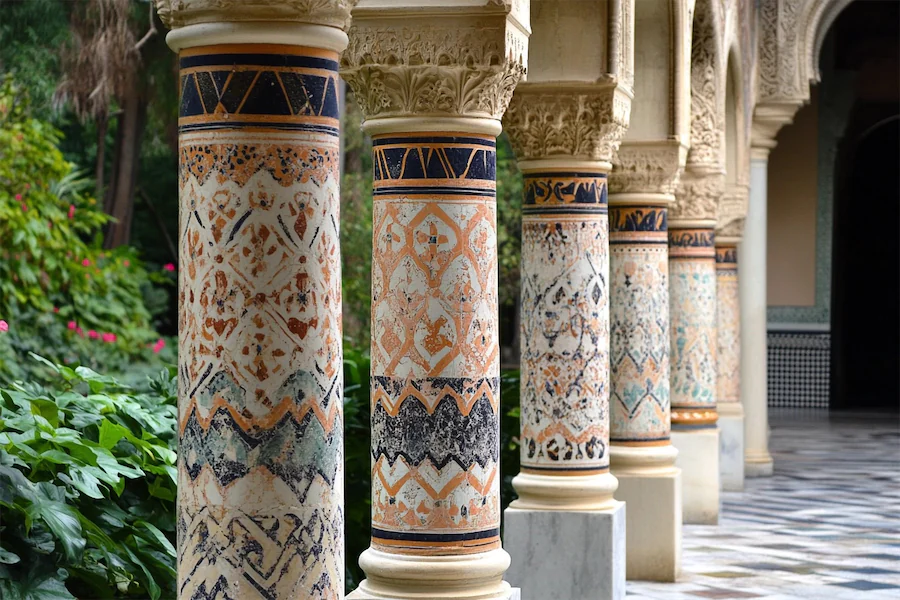Moorish Revival architecture, which gained popularity in the 19th and early 20th centuries, draws inspiration from the Islamic architecture of North Africa and Spain, particularly from the Moorish period. A defining feature of this style is the use of ornate columns that blend structural functionality with intricate aesthetic details.
Introduction to Moorish Revival Columns
In Moorish Revival architecture, columns are not merely supportive elements but also serve as focal points that exhibit elaborate craftsmanship. They often feature complex geometric patterns, arabesques, and calligraphic motifs, reflecting the rich artistic traditions of Islamic design.
Key Features of Moorish Revival Columns
- Horseshoe Arches: Columns frequently support horseshoe-shaped arches, a hallmark of Moorish design, contributing to the distinctive silhouette of the structures.
- Intricate Carvings: The surfaces of the columns are often adorned with detailed carvings, including floral and geometric patterns, showcasing the artisans’ skill and adding depth to the architectural composition.
- Polylobed Arches: In some instances, columns support polylobed (multi-lobed) arches, adding to the decorative complexity and visual interest of the structure.
Applications of Moorish Revival Columns
- Synagogues: The Moorish Revival style was notably adopted in synagogue architecture, symbolizing a connection to the Golden Age of Jewish culture in medieval Spain. For example, the Spanish Synagogue in Prague features columns with ornate capitals and horseshoe arches, exemplifying this stylistic choice.
- Palatial Structures: Buildings like the Castle of Sammezzano in Tuscany, Italy, showcase Moorish Revival columns with vibrant colors and intricate patterns, creating an exotic and luxurious ambiance.
Conclusion
Moorish Revival columns are distinguished by their elaborate designs and cultural symbolism. By incorporating elements such as horseshoe and polylobed arches, along with intricate carvings, these columns contribute to the rich visual tapestry and historical resonance of Moorish Revival architecture.
